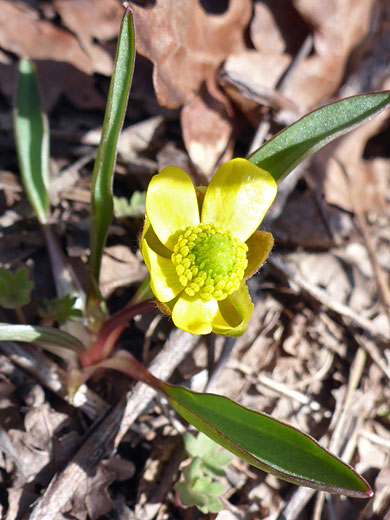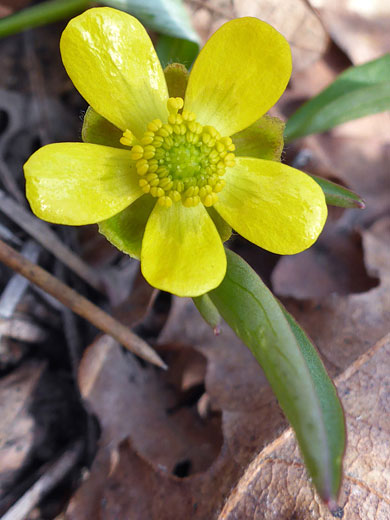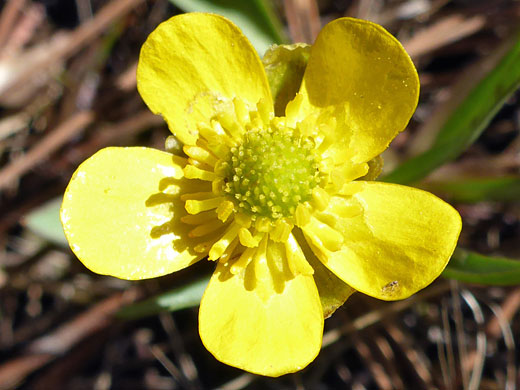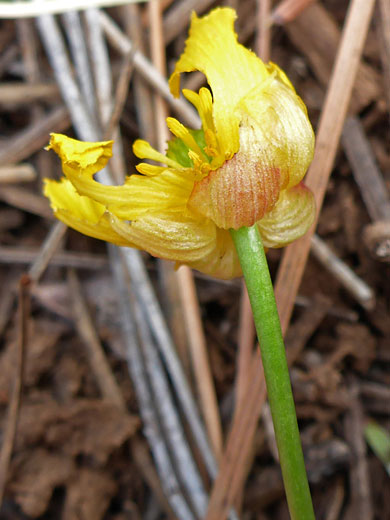Ranunculus Glaberrimus, Sagebrush Buttercup
Plants > Wildflowers > Ranunculaceae > Ranunculus Glaberrimus
Common name:
Sagebrush buttercup
Family:
Scientific name:
Ranunculus glaberrimus
Main flower color:
Range:
The Rocky Mountain states, and all states to the west
Height:
Up to 10 inches
Habitat:
Meadows, seeps, moist hillsides, open woodland, from 1,000 to 11,000 feet
Leaves:
Narrowly elliptic, usually unlobed and up to 2 inches long (var ellipticus), or broadly ovate, usually lobed and up to 0.8 inches long (var glaberrimus)
Season:
to
Ranunculus glaberrimus inhabits generally moist locations over a wide elevation range, and is found in nearly all the western states. Leaves are mostly basal at flowering time; the few stem leaves tend to wither early in the season. The basal leaves are either elliptic, often narrowly so, and usually entire (occasionally with three rounded teeth, or lobes) - this is var ellipticus, or broadly ovate to kidney shaped, usually with three lobes - var glaberrimus. The former is a generally lower elevation variety, though both are widespread. One other difference is that the three-lobed bract subtending the flower has equally-sized lobes for var glaberrimus, but a much larger middle lobe for var ellipticus.
The hairless stems may grow upright or stay close to the ground. Flowers consist of five spreading, yellow-green sepals, often reddish underneath, and between five and ten yellow petals, about twice as long as the sepals.
The hairless stems may grow upright or stay close to the ground. Flowers consist of five spreading, yellow-green sepals, often reddish underneath, and between five and ten yellow petals, about twice as long as the sepals.
All Contents © Copyright The American Southwest | Comments and Questions | Contribute | Site Map







